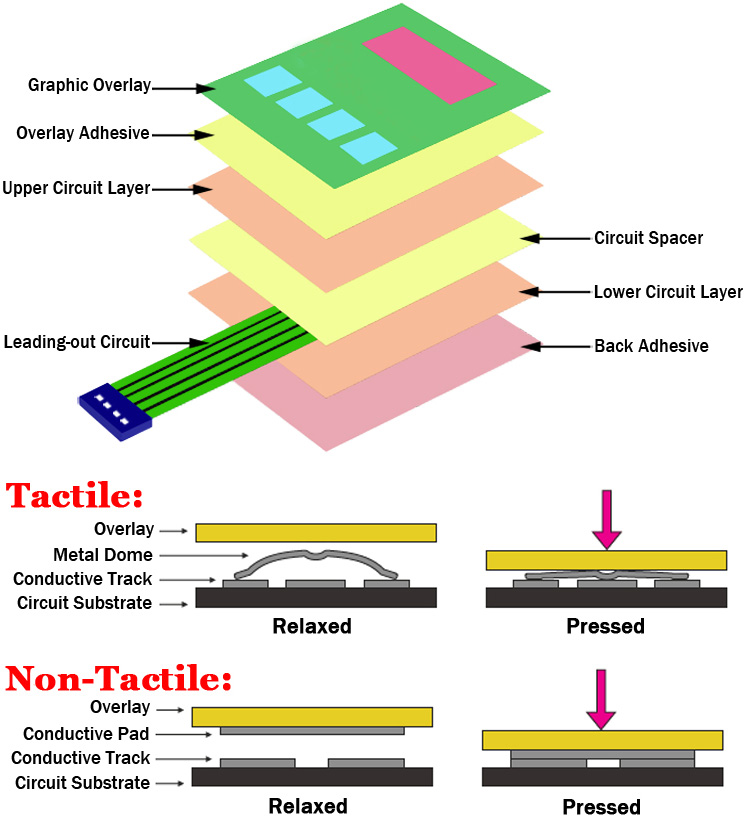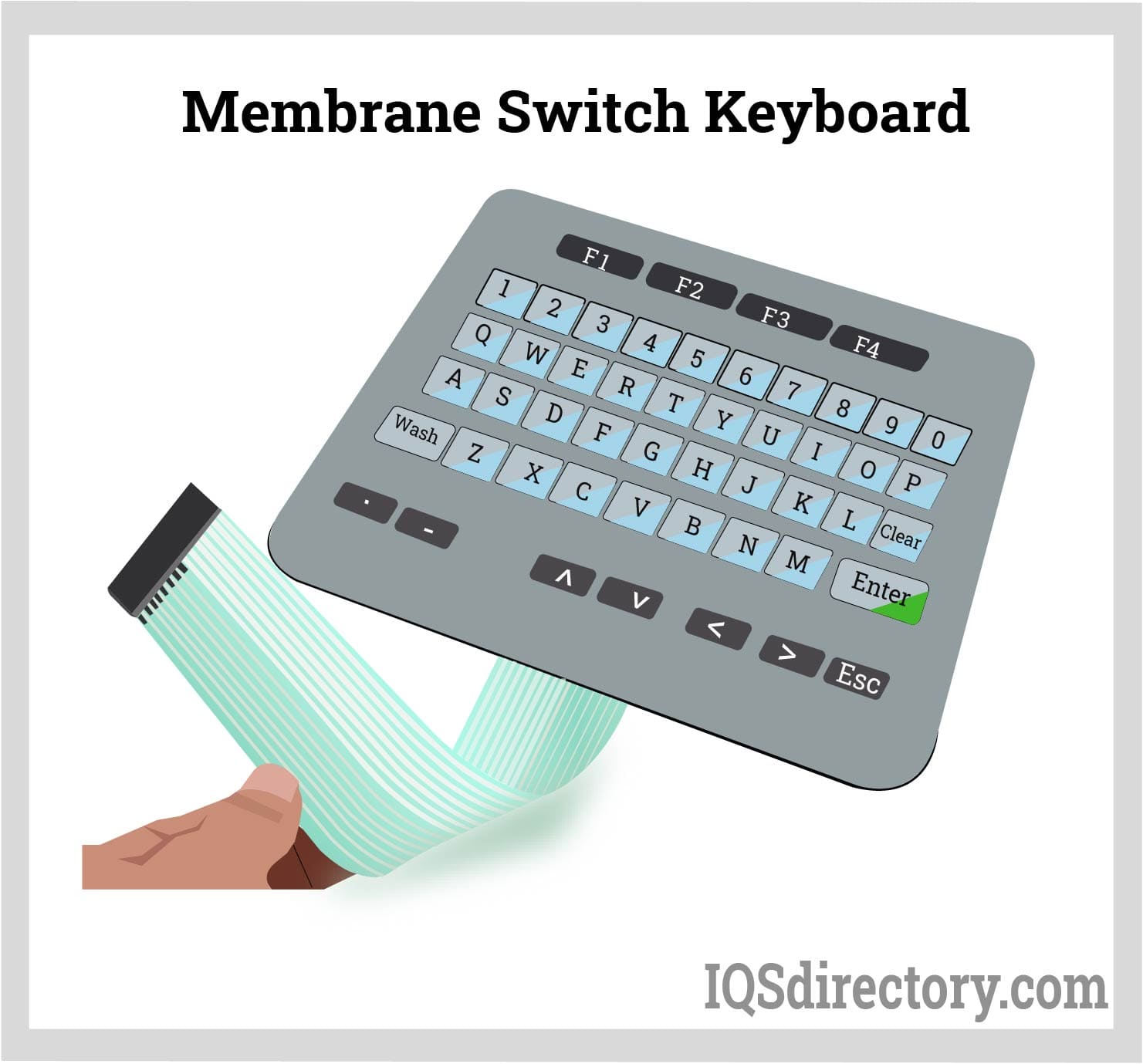Top considerations when choosing a membrane switch for aerospace use
Comprehending the Value of Membrane Layer Change in Modern Electronic Devices
Membrane switches are indispensable parts in modern digital tools. They supply a mix of capability and layout that enhances individual communication. Their resilient and lightweight nature makes them ideal for different applications. As industries evolve, the need for personalization and advanced attributes grows. Comprehending how membrane layer changes add to advancement reveals their significance in forming the future of electronics. What exists ahead for this modern technology?
The Basics of Membrane Layer Switch Modern Technology
Frequently forgotten, membrane button modern technology plays a necessary duty in the contemporary electronics landscape. These tools, composed of several layers, serve as individual interfaces for numerous electronic products, varying from household home appliances to clinical equipment. A regular membrane switch includes a visuals overlay, a spacer layer, and a circuit layer, which are carefully constructed to create a practical interface.When stress is put on the overlay, the circuit layer is completed, enabling signals to be sent to the device. This modern technology is known for its convenience, allowing customization in performance, style, and form to meet particular user requirements. In addition, membrane layer buttons are light-weight and slim, making them ideal for applications where room is a costs. Their sturdiness and resistance to ecological variables better boost their allure, guaranteeing they can endure severe conditions while maintaining functionality. Overall, membrane button modern technology is indispensable to developing straightforward and effective electronic devices

Key Advantages of Membrane Layer Switches Over
Membrane layer changes offer numerous vital benefits that make them a preferred choice in various digital applications. Their layout enables for a compact form factor, enabling manufacturers to develop light-weight and smooth devices. Furthermore, membrane layer buttons are immune to dust, wetness, and chemicals, which enhances their toughness and long life in demanding atmospheres. The responsive comments offered by these switches can enhance customer experience, making them easy and user-friendly to operate.Furthermore, membrane layer switches can be personalized with diverse graphics and colors, enabling for distinct branding possibilities. The manufacturing procedure is usually economical, particularly for high-volume manufacturing, as it reduces assembly time and simplifies style. Membrane changes call for marginal upkeep, contributing to lower total operational costs. These benefits emphasize their growing appeal in contemporary electronic devices, where reliability and straightforward interfaces are crucial.

Applications Across Numerous Industries
The adaptability of membrane switches over enables their prevalent adoption throughout different industries. In the clinical field, they are generally utilized in analysis devices and patient surveillance systems, using a resilient user interface resistant to contaminants. The vehicle market utilizes membrane layer buttons for dashboard controls, boosting user experience with streamlined designs that stand up to severe problems. In consumer electronics, they act as control board for devices such as microwaves and coffee machine, providing a straightforward interface that is simple to tidy. The aerospace sector utilizes membrane layer switches in cockpit controls, where integrity and space effectiveness are extremely important. Furthermore, the industrial market leverages these buttons in machinery and control systems to ensure durable procedure in requiring environments. This broad series of applications emphasizes the flexibility of membrane switches, making them important parts in enhancing functionality and individual communication across varied technical landscapes.
Customization and Style Flexibility

Future Fads in Membrane Switch Development
Arising trends in membrane layer switch development suggest an expanding focus on boosted performance and assimilation with clever innovations. As consumer need for extra advanced digital tools boosts, suppliers are concentrating on developing membrane layer changes that not just offer basic functional roles however additionally incorporate functions like touch sensitivity, backlighting, and haptic feedback.Furthermore, advancements in products are anticipated to boost toughness and environmental resistance, making membrane switches suitable for varied applications in industries such as healthcare, automotive, and customer electronic devices. The integration of capacitive touch technology is most likely to end up being more widespread, permitting for sleeker designs and improved customer interfaces. membrane switch.Additionally, the increase of the Net of Points (IoT) is motivating the development of membrane layer switches over that can interact wirelessly with Look At This various other tools, boosting interconnectivity. Overall, the future of membrane layer switch innovation shows up promising, driven by development and the pursuit of straightforward solutions
Often Asked Concerns
Exactly How Do Membrane Switches Over Compare to Conventional Mechanical Switches?
Membrane layer switches, being much more space-efficient and using a smooth style, contrast with conventional mechanical switches that supply tactile feedback. The former usually include customizable graphics, while the latter commonly assure sturdiness and dependability in various applications.
What Products Are Generally Utilized in Membrane Switch Production?
Membrane layer buttons are normally created using products such as polyester, polycarbonate, and printed conductive inks. These products provide resilience, responsiveness, and adaptability, making them ideal for numerous applications in electronic devices and customer interfaces.
Can Membrane Switches Be Repaired or Recycled?
Membrane switches can commonly be repaired, especially if small problems arise, such as glue failing or surface area damages. Nevertheless, complete reuse is commonly limited as a result of put on and prospective deterioration of products gradually.
Just How Do Ecological Variables Influence Membrane Switch Over Performance?
Ecological aspects, such as temperature, humidity, and direct exposure to chemicals, greatly affect membrane layer button efficiency. Extreme problems can bring about destruction, influencing responsiveness and longevity, eventually jeopardizing the functionality of the gadget in various applications.
What Is the Typical Lifespan of a Membrane Layer Change?
The typical life expectancy of a membrane layer switch typically ranges from 1 to 5 million actuations, relying on factors such as use frequency, environmental problems, and the products utilized in production, influencing resilience and performance durability. A common membrane button is composed of a graphic overlay, a spacer layer, and a circuit see it here layer, which are thoroughly assembled to create a useful interface - membrane switch.When stress is applied to the overlay, the circuit layer is completed, enabling signals to be transferred to the tool. The tactile responses provided by these buttons can boost individual experience, making them easy and user-friendly to operate.Furthermore, membrane layer buttons can be personalized with varied graphics and shades, allowing for one-of-a-kind branding opportunities. As consumer need for much more sophisticated electronic devices increases, suppliers are concentrating on developing membrane layer switches that not just offer fundamental functional functions yet likewise include features like touch level of sensitivity, backlighting, and haptic feedback.Furthermore, developments in products are anticipated to boost durability and ecological resistance, making membrane switches ideal for varied applications in markets such as healthcare, auto, and consumer electronic devices. The integration of capacitive touch technology is most likely to become extra prevalent, permitting for sleeker designs and improved customer interfaces.Additionally, the increase of the Internet of Points (IoT) is motivating the advancement of membrane switches that can connect wirelessly with other gadgets, boosting interconnectivity. Membrane buttons, being extra space-efficient and view it now offering a streamlined layout, comparison with standard mechanical buttons that supply responsive feedback